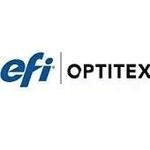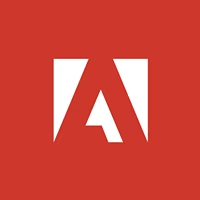Description

EFI Optitex

Zbrush
Comprehensive Overview: EFI Optitex vs Zbrush
EFI Optitex and ZBrush are both specialized software applications used in different creative industries, each catering to distinct market needs and functions.
EFI Optitex
a) Primary Functions and Target Markets
Primary Functions: EFI Optitex is a software suite designed for the fashion, textile, and apparel industries. Its primary functionalities include:
- 2D and 3D design tools for creating digital patterns and virtual garments.
- Simulation of garment fitting across various body types, enabling adjustments to design before physical production.
- Integration of CAD (Computer-Aided Design) for streamlined pattern creation and sizing.
- Tools for fabric simulation and texture mapping, allowing designers to visualize how garments will look with different materials.
- Collaboration features for sharing and feedback in a secure digital environment.
Target Markets:
- Fashion designers and apparel companies.
- Textile manufacturers.
- Retailers looking for digital solutions to enhance product development cycles.
- Educational institutions offering courses in fashion and design.
b) Market Share and User Base
EFI Optitex has carved out a niche in the fashion and textile industry, focusing on companies seeking to digitize their design and manufacturing processes. While it may not have the widespread global recognition of more general design software due to its specialized nature, it is well-regarded among industry professionals. Its user base includes major apparel brands and smaller design houses committed to innovation in garment design and manufacturing.
ZBrush
a) Primary Functions and Target Markets
Primary Functions: ZBrush is a digital sculpting tool that offers a robust set of features focused on high-resolution modeling. Its capabilities include:
- Advanced sculpting and modeling tools for creating highly detailed 3D meshes.
- Texture painting and materials application in a unified workflow.
- Real-time rendering and visualization to see the impact of edits immediately.
- An extensive brush library and customizable tools for artists to create unique characters, models, and environments.
Target Markets:
- Game developers and studios, where character and environment detail is crucial.
- Visual effects (VFX) artists in the film industry.
- Concept artists and illustrators.
- 3D printing and prototyping services.
- Enthusiast and professional 3D artists.
b) Market Share and User Base
ZBrush is considered a leader in the digital sculpting and modeling segment. Its user base is significant within the entertainment and animation industries. While specific market share data might not be publicly available, its integration into major projects in gaming and film speaks to its widespread adoption and recognition. The community around ZBrush is vibrant, supported by a range of tutorials and resources, which further solidifies its standing in the market.
c) Key Differentiating Factors
-
Industry Focus:
- EFI Optitex is specifically targeted towards the fashion and textile industry, providing tools that address challenges unique to apparel design and manufacturing.
- ZBrush is versatile across a range of industries but is particularly prominent in fields requiring detailed 3D modeling, like gaming, film, and concept art.
-
Functionality:
- EFI Optitex focuses on pattern making, garment virtual fitting, and textile design, serving a complete digital workflow for clothing production.
- ZBrush excels in digital sculpting and texturing, allowing for the creation of intricate models and characters with high levels of detail.
-
User Experience:
- EFI Optitex users tend to be professionals with a background in fashion and textiles, requiring specific knowledge of garment construction.
- ZBrush is geared towards digital artists who need intuitive sculpting tools and may come from various artistic disciplines.
-
Collaboration and Integration:
- EFI Optitex integrates well with ERP and PLM systems in the fashion industry, supporting collaborative design and production workflows.
- ZBrush often integrates with other 3D software to support broader workflows in film and game production pipelines.
Each of these software solutions is tailored to the needs of its respective industry, making them both leaders for their specialized applications.
Contact Info

Year founded :
Not Available
Not Available
Not Available
Not Available
Not Available

Year founded :
Not Available
Not Available
Not Available
Not Available
Not Available
Feature Similarity Breakdown: EFI Optitex, Zbrush
EFI Optitex and ZBrush are both specialized software tools, but they serve different industries and have distinct functionalities. Here's a breakdown of their features, user interfaces, and unique aspects:
a) Core Features in Common
While EFI Optitex and ZBrush cater to different sectors, there are a few core features they share, primarily at a high level of digital design tools:
-
3D Modeling: Both software platforms enable users to create and manipulate 3D models, although their applications differ significantly. Optitex focuses on patterns and garments, while ZBrush is used for intricate digital sculptures and character designs.
-
Simulation/Visualization: Each provides robust visualization capabilities. Optitex simulates the drape and fit of textiles on virtual avatars, whereas ZBrush provides detailed visualization of sculpted models.
-
Customization and Flexibility: Both tools offer extensive customization options, allowing users to tailor workflows and outputs according to project needs.
-
Import/Export Options: They support various file formats for importing and exporting models, facilitating integration with other design and CAD software.
b) Comparison of User Interfaces
-
EFI Optitex: Its interface is designed with the fashion and textiles industry in mind, prioritizing pattern making, fabric simulation, and fit analysis. It features toolbars specific to 2D pattern design and 3D garment visualization. The interface is relatively straightforward for users experienced in CAD and garment design but might require a learning curve for newcomers.
-
ZBrush: Known for its unique, non-standard interface tailored to artists and designers, ZBrush focuses heavily on providing an intuitive sculpting and painting experience. It includes a vast array of brushes, alphas, and materials, all accessible through a toolbar-heavy UI. The interface is customizable and highly efficient for creative processes, but it can overwhelm new users due to its expansive feature set and unique navigation.
c) Unique Features
-
EFI Optitex:
- Pattern Design and Grading: Optitex excels in 2D/3D pattern design, allowing detailed pattern adjustments, grading, and nesting for efficient fabric use.
- Fabric Simulation: Advanced textile simulation tools let designers visualize how different fabrics will behave on a garment.
- Marker Making: Essential for textile layouts, Optitex provides powerful marker making tools to optimize material use.
- Integration with Production Tools: Direct integration with manufacturing systems streamlines the design-to-production pipeline.
-
ZBrush:
- Dynamic Sculpting Brushes: ZBrush offers an unprecedented variety of sculpting brushes that mimic detailed physical sculpting techniques.
- Polypainting: Users can paint on the surface of sculptures with millions of polygons without requiring a UV map.
- ZRemesher: An automatic tool for enhancing mesh topology which is crucial for animation and further refinement.
- Dynamesh: Allows artists to automatically redistribute topology during sculpting, enabling seamless model adjustments.
In summary, while EFI Optitex and ZBrush both support 3D modeling and visualization, their applications, interfaces, and unique features serve distinctly different purposes aligned with their target industries—textiles and fashion for Optitex, and digital sculpture and art for ZBrush.
Features

Pattern Design Software
Cutting Room Automation
3D Virtual Prototyping
PLM Integration
Costing and Consumption

Texturing
Rendering
Performance
Sculpting Tools
Best Fit Use Cases: EFI Optitex, Zbrush
EFI Optitex and Zbrush are both powerful software tools used in different industries for creating 3D models and digital designs. Their distinct features make them suitable for specific business needs and projects. Here’s a breakdown of their best fit use cases:
EFI Optitex
a) Best Fit for Businesses or Projects:
EFI Optitex is primarily designed for the apparel, fashion, and textile industries. It offers advanced, end-to-end software solutions for pattern making, 3D prototyping, and apparel design. Businesses that benefit the most from EFI Optitex include:
-
Fashion Designers and Clothing Manufacturers: Companies focused on designing and producing garments benefit significantly from Optitex's capabilities. It streamlines pattern creation and digital prototyping, reducing the need for physical samples and speeding up the design-to-production process.
-
Textile and Apparel Production Companies: Optitex helps in optimizing fabric usage and allows for seamless integration from design to manufacturing. This is ideal for companies that need to manage patterns, grade sizes, and create fitting simulations efficiently.
-
Retailers and Brands Seeking Quick Turnarounds: The ability to visualize clothing in 3D allows for faster decision-making and iteration, which is crucial for businesses in fast fashion or seasonal apparel markets.
d) Catering to Different Industry Verticals or Company Sizes:
EFI Optitex serves a wide range of business sizes. From small design studios to large multinational manufacturers, its scalable solutions support digital transformation by enhancing productivity and reducing time-to-market. Larger companies with complex supply chains benefit from its integration capabilities, while smaller companies appreciate its user-friendly design and cost-effective prototyping features.
Zbrush
b) Preferred Scenarios:
Zbrush is widely used in the film, gaming, and animation industries. It excels in creating highly detailed 3D sculptures and characters, making it a preferred choice in scenarios like:
-
Video Game Development: Zbrush is ideal for creating intricate models of characters, environments, and assets. Its capability to handle details at a very high resolution makes it perfect for developing life-like game assets.
-
Film and Animation Production: The software is extensively used for creating digital effects, characters, and models that require a high amount of detail and complex designs, such as monsters, aliens, or other digitally generated creatures.
-
3D Printing and Prototyping: Artists and designers use Zbrush for creating models that are later printed in 3D. Its high-resolution detailing makes it suitable for producing prototypes in industries like jewelry, toys, and collectibles.
d) Catering to Different Industry Verticals or Company Sizes:
Zbrush caters to industries that require high-quality graphical details and creativity, such as entertainment (film, television, and gaming) and product design (toys, prototypes). While it's favored by large studios for blockbuster projects, it’s also accessible to freelance artists and small studios due to its powerful features and relatively affordable pricing. The community support and extensive tutorials empower users across varying skill levels.
In summary, while EFI Optitex is tailored for the fashion and textile industry focusing on practicality and production efficiency, Zbrush is geared towards creative industries requiring detailed artistic elements and virtual sculpting. Both cater to a range of company sizes, providing scalable tools to fit different business needs.
Pricing

Pricing Not Available

Pricing Not Available
Metrics History
Metrics History
Comparing undefined across companies
Conclusion & Final Verdict: EFI Optitex vs Zbrush
Conclusion and Final Verdict: EFI Optitex vs. Zbrush
When evaluating EFI Optitex and Zbrush, it's essential to consider both the specific needs of the user and the nature of projects to determine which product offers the best overall value. These software tools cater to distinct sectors – fashion and design for EFI Optitex, and digital sculpting and modeling for Zbrush.
a) Best Overall Value:
EFI Optitex is best suited for professionals in the fashion and textile industry, offering comprehensive tools for 2D and 3D garment design, pattern making, and virtual prototyping. It's ideal for companies looking to streamline their design processes, reduce waste, and enhance collaboration within the fashion pipeline.
Zbrush, on the other hand, stands out for its unparalleled capabilities in digital sculpting and 3D modeling. It is predominantly used in industries such as game development, film and animation, toy design, and collectible creation. Zbrush offers a powerful suite of artistic tools that allow designers to create highly detailed models.
For users who are in fashion technology, EFI Optitex provides the best overall value. For those in entertainment and creative industries requiring detailed digital sculpting, Zbrush is the superior choice.
b) Pros and Cons:
EFI Optitex:
Pros:
- Specialized for fashion design, providing tools to simulate physical fabrics and patterns.
- Streamlines production with digital prototyping, reducing material waste.
- Enhances collaboration with integrated platforms and easy sharing of digital designs.
Cons:
- Niche focus limits its applications to the fashion and textile industries.
- Can have a steep learning curve for users not familiar with garment production processes.
- Potentially high cost for small businesses or independent designers.
Zbrush:
Pros:
- Powerful sculpting tools that allow for intricate detail and high-resolution models.
- Versatile usage across various creative industries.
- Large community and resources for learning and support.
Cons:
- Complexity can be daunting for beginners; extensive training is often required.
- Not specifically tailored for fashion, limiting its direct applicability in that industry.
- May require additional software for final renderings or animation integration.
c) Recommendations:
For users deciding between EFI Optitex and Zbrush, the key recommendation is to align the choice with the primary needs of your projects. If your work involves fashion design, pattern making, and requires tools for accurate garment simulation, EFI Optitex is likely the better choice. It facilitates the design process in a way that's specifically tailored to fashion industry needs.
Alternatively, if your focus is on digital art, high-detail modeling, or character design, Zbrush provides superior technical capabilities and flexibility for intricate digital sculpting.
It's also recommended to consider the potential need for cross-industry functionalities. In such cases, some integration or combination of software might be required to fully realize your creative vision, and understanding the workflow compatibility with other tools you use is crucial.
Finally, taking advantage of demos, trial versions, or educational resources available for both products can provide hands-on experience to better inform your decision based on personal workflow and project demands.
Add to compare
Add similar companies



